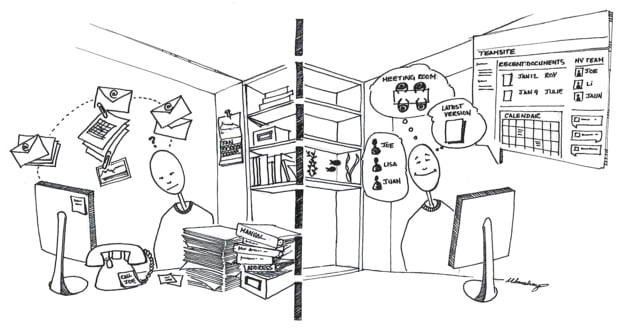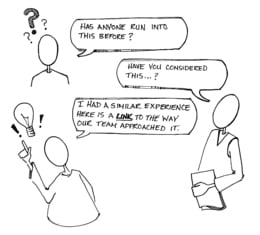Although sadly, many intranets today are doing the reverse and are not making a positive impact on workplace happiness! When intranets are poorly designed, organically mismanaged or left to decay without the required love and support, they can have a detrimental impact on an organization. It takes a special combination of thinking outside the box — beyond the world of features and functionality and into the complex world of what makes people tick.

Intranets, and for that matter successful corporate cultures that drive stronger levels of employee engagement, generally have:
Simplified access to everything
Employees want quick and easy access to the tools, information and subject matter experts they need to effectively do their job. Good intranets have strong information structures that get out of the way, and allow people to find who and what they need. If designed correctly an intranet can break down corporate silos and barriers, but creating these types of structures generally requires a special understanding of corporate politics, change management and information design.
Community and social interaction
Studies show that employees who have a best friend at work are happier and more engaged. A "best friend at work" is someone who you can confide in and count on. In addition, workplaces where strong social connections are fostered are often happier. Social networking capabilities not only help people feel more connected but also help them be more connected and share ideas or provide help when someone needs it. Few things are more satisfying than feeling appreciated and recognized for one's contributions.
Idea generation, discussion and feedback — fostering input so that opinions count
An important driver in becoming disengaged in an organization is feeling like your opinions and ideas don't matter. If you aren't respected, listened to, and making a contribution then it's inevitable that you'll feel like a replaceable piece in a puzzle. Organizations that understand this and appreciate the value of unlocking the ideas stored in their employees' minds are turning to social features like discussions, commenting, ratings, rankings, and forums to fuel feedback loops into intranets to improve the content, gather innovative ideas and thinking, and to help communities form across like-minded individuals.
Clear and compelling communication
Many executives and corporate communications practitioners understand that using storytelling techniques to communicate the mission, vision, strategy and direction of the company is critical to employee alignment and engagement. Communicating this in a vast sea of information is difficult. A good intranet will allow for both effective top-down strategic communication, but also give employees access to more reciprocal, raw just-in-time messaging. This requires not only a trained communications team, but also a great web publishing framework with thoughtful channel management from corporate to department to team to individual — with an increase in the more ad-hoc social networks.
Recognition?
Let's face it, recognition feels good and there is a reason! Recognition provides acknowledgement to people that their efforts are appreciated and have made a difference. A well-designed intranet takes this into account and provides visible recognition. In addition, strong intranets allow people to develop their personal brand, which serves to help authenticate someone's value proposition and expertise in a certain area. That may help them connect with others or be asked for help, which further reinforces their perception that they matter.
A commitment to usability and long-term improvement
People have an enormous tolerance for bad user experiences, but that doesn't mean it's acceptable to waste their time. Not only do messy site structures, inconsistent navigation systems and poorly written content disorient employees (online), but they also reflect poorly on the company's brand and leave the impression that the organization doesn't have its s%#t together. The real secret to optimizing the usability of an intranet comes from a long-term dedication and investment from people who care. The design and implementation phase of your project is a chance to start off on the right foot, but additional value is often realized once an intranet has had a chance to evolve. Some might argue that usability doesn't drive engagement, but it clearly helps avoid disengagement!
Is your intranet having a positive impact on employee happiness? I'd love it if you were to share some of the ingredients that have fostered this. Drop me a line or leave a comment!!






.jpeg?bc=white&la=en&mw=416&modified=20251202191043&hash=E64AA9DFFAE8D1AC27890831F714D5B0FA2FEBB2)

